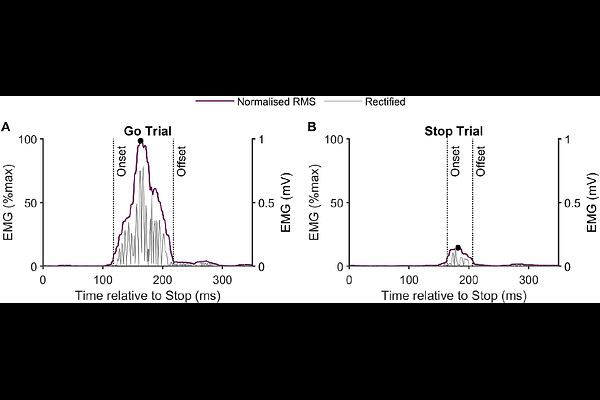Global motor system suppression as the primary mechanism of human action stopping: challenging the pause-then-cancel model

Global motor system suppression as the primary mechanism of human action stopping: challenging the pause-then-cancel model
Chaudhuri, E. R.; Long, T.; Hannah, R.
AbstractThe ability to stop a planned or ongoing action is fundamental to inhibitory control. A recent theory proposes that stopping involves two distinct phases: an initial global suppression of motor activity (\"pause\") followed by a selective cancellation of the targeted action. However, the necessity of a second \"cancel\" stage remains debated. We tested whether global suppression alone is sufficient to stop movement by analysing electromyography from task-relevant agonist and antagonist muscles, alongside transcranial magnetic stimulation measures of global motor suppression from task-irrelevant muscles, during a stop-signal task in adult human participants of both sexes. In Experiment 1, reanalysis of ballistic finger movements revealed that agonist muscle offset consistently preceded behavioural stopping, aligning with the time course of global suppression. In Experiment 2, we extended these findings to whole-arm reaching movements, demonstrating that global motor suppression persisted beyond the termination of muscle activity when stopping prevented movement initiation, but disengaged in time for antagonist activation used to interrupt movements once they had begun. These findings challenge the pause-then-cancel model, instead supporting a single-stage global suppression framework. They also suggest that the global suppression mechanism is not a rigid, top-down stopping mechanism but rather part of a broader motor control system that flexibly adjusts movement commands based on task demands.